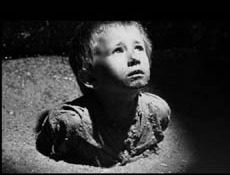
Re-Visiting History
Written by Andrea Maxwell | Posted by: Anonymous
When one mentions the Holocaust in the movies a number of films come to mind: "Schindler’s List" and "Sophie’s Choice" to name the most famous. But one could probably not name many more, at least not without stretching the category into a more general list of World War II movies or adding on foreign films seen widely in America such as "Life is Beautiful."
The treatment of the Holocaust in American cinema has changed over time from just before the war when right and wrong were less clear, to directly after the war when filmmakers avoided the Holocaust’s true horror, to later films that dealt with anti-Semitism in general terms without making mention of the recent genocide. This is largely because America’s own relationship to the Holocaust has evolved over time. How this relationship is mirrored in American cinema is the subject of Daniel Anker’s new film "Imaginary Witness: Hollywood and the Holocaust," which will screen this month at both the Hartford Jewish Film Festival and the Maine Jewish Film Festival, following a year of screenings throughout the U.S. at film festivals. It also screened in New England a few times, including Boston and on March 2nd at UMass Amherst.
Inspired by the technique in the Hollywood documentaries "Visions of Light" about cinematographers and similar films, Anker decided to use extended clips from the Holocaust movies to tell the story. Directors Sidney Lumet and Steven Spielberg were also willing to sit down for interviews, as was actor Rod Steiger, and a number of producers from these films, some made fifty years ago. Gene Hackman narrates the film which delves into the changing attitude about the Holocaust in America by demonstrating how the attitude evolved in Hollywood.
Daniel Anker is the son of a refugee from Hitler’s Germany and the great-grandson, nephew, and cousin of Holocaust victims, but a film on the Holocaust was not originally on his agenda. His past projects have included Southern racism and campaign finance reform, so Anker was a logical choice to be approached by AMC to do the documentary. The specifics and the exact point the documentary was to make were left up to him.
After five months of research including watching 40 films, the story had taken a turn from his initial thoughts. Anker’s first direction was a look at Hollywood’s treatment of Germany and Nazism until the war began. Then, after seeing 1945 footage of a visit to the newly liberated concentration camps by members of Hollywood executives, Anker and his associates were struck by the lack of attention to the subject after the war, and by the very people who had seen the atrocities. Anker says, "The trip was followed by decades of silence from the studios."
Anker was intent on keeping the point-of-view as that of the participants in the documentary and not his own. He believes, "A documentary is a unique way to present multiple points of view at the same time, and our film does attempt to present a very difficult issue (representation of the Holocaust in film) through the different sides of the issue. We tend not to editorialize in the film– there are movies here that I don’t like, and some I feel are brilliant, but each is presented as analytically as possible. Having said that, this is presented through the prism of my experiences. Who I am as a filmmaker, as an American Jew, and as a great-grandson of Holocaust victims, has much to do with the tone and the content."
"Confessions of a Nazi Spy" was made in 1938, and in "Imaginary Witness" Anker says the industry portrayed a "relative ambivalence." He was forced to wonder how much America knew of the European difficulties at the time, and what other factors contributed to the views displayed in films, such as American anti-Semitism and economic ties. After the war, in 1947, "Gentleman’s Agreement" and "Crossfire" were made to examine anti-Semitism, but did not show the true horror behind the concentration camps that had only two years prior been shut down.
Even acclaimed films have certain aspects that when observed critically show the attitude of Americans to somewhat avoid the real terrors, as evidenced by the protagonists in "Sophie’s Choice" and "Schindler’s List" — Sophie is not a Jew and Oscar Schindler is a Nazi with a heart. "The Pawnbroker," (1965) which made a noble effort in showing scenes from concentration camps was unrealistic in its choice for a healthy, robust main character. Though pieces of art, Anker looks at each film in "Imaginary Witness" as evidence of American life in the 60 years since World War II ended.
Surprisingly, one of the greatest challenges was making it clear he was not out to celebrate the Hollywood films. It is difficult to show clips from old movies, some quite well-known and well-respected such as "Schindler’s List" and not glorify the subject. Anker has great respect for many of the films, the filmmakers, and the subjects, especially since so few have tried to tackle the Holocaust at all. "Attempting to recreate an unimaginable reality," Anker says, makes the films, "by definition flawed," but the idea was to "show how the flaws reflected the time in which they were made." Perhaps this film, made in 2005, is the next step in the progression of films that will delve deeply into a subject which should never be forgotten.
'Imaginary Witness: Hollywood and the Holocaust,' screens on March 29 at the Hartford Jewish Film Festival (www.hjff.org)and on March 15 at the Maine Jewish Film Festival (www.mjff.org).









